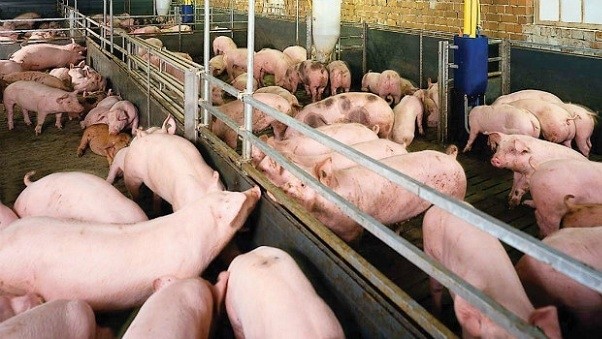Finding solutions to the problem of excess supply
2017 was a difficult year for animal husbandry production as the industry had to face abnormal fluctuations in the feed market, disease outbreaks, and especially the pig oversupply crisis in 2016 and the first half of 2017, creating a lot of difficulties for output.
The domestic market is witnessing an oversupply of pork and certain other meat products, but Vietnam still has to import a number of cattle and poultry meat products and feed ingredients. This paradox has pushed the domestic animal husbandry sector into competitive pressure on prices and quality.
According to Hoang Thanh Van, Director of the Animal Husbandry Department (AHD), in order to deal with shortcomings in animal husbandry, the department has developed a report evaluating the current situation and proposing a number of issues concerned, including the "promotion of sustainable livelihood shifts and animal husbandry development for subregions in the Mekong Delta", and "disaster prevention and control for crops and livestock in the northern midland and mountainous areas". In addition, the department also held a conference to discuss solutions of researching and piloting animals resistant to climate change for the heavily affected areas, while accelerating the implementation of a planning scheme on centralised livestock slaughter establishments nationwide.
By the end of 2017, 56 of the 63 provinces and cities around the country had approved the planning scheme on centralised animal slaughter facilities, while 58 out of the 63 cities and provinces had given the nod to animal husbandry development plans (or agricultural development plans, including the field of animal husbandry). This is considered a good premise for the food safety inspection and control work to be thoroughly implemented, and for the sector to be more proactive in their production and consumption plans of livestock husbandry products at present.
Tapping into the internal power of the livestock husbandry industry
Specific steps have been taken towards an intensive production process without overheated growth, but they have yet to generate positive transformations in reality. According to data from the General Statistics Office (GSO), regarding the first three months of 2018 alone, the total number of pigs across the country decreased by 6.2% compared to the same period last year. Specifically, high levels of decline were seen in the provinces of Thua Thien Hue (16.1%), Tra Vinh (15.4%), Vinh Long (15.1%), Ha Tinh (11.3%), and Hoa Binh (10.9%). Hence, the output of live hogs also saw a decrease of 1.2%. The slump was attributed to many reasons, including the mass deaths of cattle earlier this year as the extremely cold spells seriously affected animal husbandry, and the pork prices dropping sharply, raising fear among pig farmers.
AHD Director, Hoang Thanh Van, said that only through organising livestock farming in new chains, could the sector address the instability and prove the origin of products to help consumers achieve peace of mind in using them. Therefore, it is necessary to issue more specific mechanisms to support the development chains linked to hi-tech production and processing, as well as promoting the application of information technology in product traceability, and raising public awareness of the use of safe food. Meanwhile, the departments, sectors, and units concerned should work together in managing the market and dealing with violations of food safety requirements, thus building social trust in safe food and developing markets for products joining the link chains.
In addition to sparking domestic resources, the livestock husbandry sector has actively cooperated with international organisations, non-governmental organisations and government agencies of several countries (the US, Denmark, Russia, Japan, and Southeast Asian nations) to access technical advances, conduct market surveys and evaluations, and seek export opportunities for Vietnam's animal husbandry products.
Together with choosing the correct and well-organised direction in animal husbandry planning tied to the market, and organising production in link chains, the role of businesses connecting the output with each market segment is considered an important joint in ensuring supply-demand balance and boosting the consumption of farm produce for farmers. If these steps are performed effectively, it is likely that Vietnam will soon become a major pork exporter in the region and the world.
















